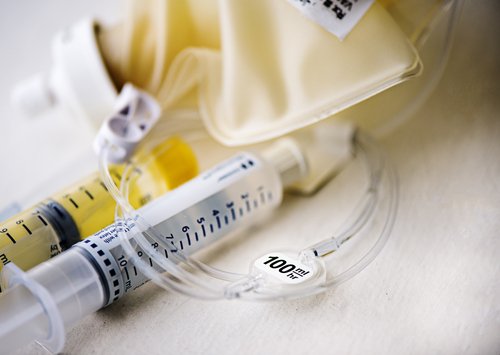Revlimid-based Therapies are Best Maintenance Option for Newly-diagnosed Multiple Myeloma Patients, Analysis Finds

Maintenance treatments containing the immunomodulatory therapy Revlimid (lenalidomide) are the best option for patients with multiple myeloma, according to a recent meta-analysis.
The study, “Maintenance Treatment and Survival in Patients With Myeloma,” was published in the journal JAMA Oncology.
The continuous therapy approach, which consists of administering a multi-agent chemotherapy for a fixed time (known as the induction period) followed by a less-intensive but prolonged maintenance treatment, has been studied extensively in patients with newly diagnosed multiple myeloma (NDMM).
Maintenance treatment is defined as a treatment that is administered after completion of the induction period in patients who are either responsive or their disease is not progressing.
Despite the well-known importance of maintenance therapy, no studies have directly or indirectly compared the superiority of one regimen over another. Additionally, no direct comparisons have been made across patient subsets.
So, researchers conducted a systematic literature review to identify randomized clinical trials (RCTs) that have evaluated the use of novel agents in maintenance treatment in patients with NDMM.
Researchers then conducted an analysis to determine the effectiveness of each regimen, as measured by progression-free survival — the amount of time a patient lives without their disease worsening — and overall survival, over the others.
The goal of this study was to analyze and compare the effectiveness of different maintenance regimens in NDMM patients.
Researchers were able to identify 11 prospective Phase 3 clinical trials, each of which included at least two maintenance approaches. The comparisons were conducted against either placebo treatment or no maintenance.
Among the 11 clinical trials, 5,073 participants receiving a total of eight different treatments were included.
When looking specifically at progression-free survival, Revlimid-based regimens, including Revlimid-prednisone and Revlimid alone, were identified as the most effective options.
In fact, patients on a maintenance therapy for Revlimid-prednisone and Revlimid alone improved progression-free survival by 61% and 53%, respectively.
Four other maintenance treatments, including thalidomide and Velcade (bortezomib)-based treatments (thalidomide-interferon, thalidomide-Velcade, Velcade-prednisone, and thalidomide alone) also showed improvements in progression-free survival compared to placebo, albeit with less benefit than Revlimid-based treatments.
When conducting overall survival analysis, researchers identified Revlimid alone as the best option, as it demonstrated a 24% improvement in overall survival. This was followed by Velcade-thalidomide and Velcade-prednisone.
Another advantage of using Revlimid, the study found, is that it does not cause neuropathy (nerve pain), which is a significant limiting factor in the long-term use of both thalidomide and Velcade.
Researchers also conducted subgroup analysis, which indicated that patients with good prognosis and standard-risk chromosomal abnormalities were better off with Revlimid-based maintenance. However, patients with poor prognosis were found to benefit more from Velcade-based maintenance.
“Based on PFS [progression-free survival] and OS [overall survival] results of this NMA [network meta-analysis], lenalidomide maintenance appears to be the best treatment option, by synthesizing the available evidence of novel agent-based maintenance in the past 20 years,” researchers concluded.
However, it remains to be seen whether all patients with multiple myeloma require maintenance therapy, or if the agents should be chosen based on characteristics specific to the disease.






